Tandem wing
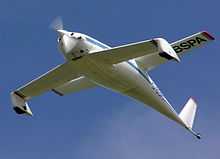
A tandem wing aircraft has two main wings, with one located forward and the other to the rear. Both wings contribute to lift. In the case where the rearmost tandem wing is smaller so that it looks like an oversize tailplane it is referred to as a "Delanne wing" - from Maurice Delanne, a French designer of tandem wing aircraft. In a tandem wing design the lift vectors on the two wings are spread far apart longitudinally, allowing them to act together to achieve stability and control.
This is different from a biplane, in which the wings are stacked more or less vertically, one above the other, such that their lift vectors are very close together and a separate horizontal stabiliser surface is required, placed well forward or aft of the main wings. It differs from the canard or "tail-first" configuration in that the forward wing contributes a major part of the lift, typically more than 50%.
Designers using tandem wings
- John J. Montgomery
- Henri Mignet
- Maurice Delanne
- George Miles
- Louis Peyret
- Claude Piel
- Burt Rutan
Examples
- Langley Aerodrome - 1890s-1900s, Langley's first tandem wings were steam-powered unmanned aircraft, manned attempts in 1903 failed to achieve take-off.
- Montgomery Aeroplane and The Santa Clara tandem wing gliders - 1903-1905.
- Blériot VI - 1907
- Caproni Ca.60 - 1921
- Arsenal-Delanne 10
- Miles M.35 Libellula and Miles M.39B Libellula - 1942-1945, an experimental fighter and a scaled bomber design
- Westland P.12 Lysander Delanne - 1940, modification of a Lysander observation aircraft with a gun turret replacing the conventional empennage
- Mauboussin Hémiptère
- Mignet Pou-du-Ciel - 1933 - the most popular and imitated pre-World War II design
- Peyret Tandem - 1922 - winner at the first British Glider Competition at Itford in 1922
- Curtiss-Wright X-19 - 1963 - Four rotor convertiplane
- Lockspeiser LDA-01 - 1971 - utility transport sub-scale research aircraft
- Rutan Quickie - 1978
- Viking Dragonfly - 1980
- Scaled Composites ATTT - 1986
- Scaled Composites Proteus - 1998
Gallery
-
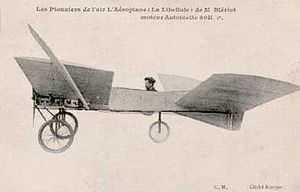
Blériot VI Libellule (1907)
-
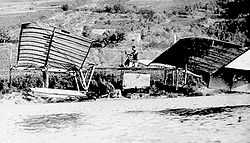
Langley Aerodrome, modified (1914)
-
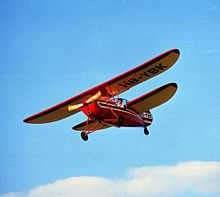
Pou-du-Ciel (1933 onwards)
-
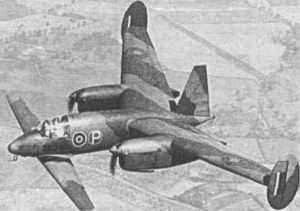
Miles M.39B (1943)
-
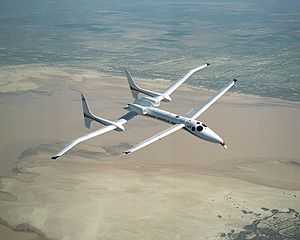
Scaled Composites Proteus (1998)
See Also
- Stagger (aviation)
Notes
References
- Miles, George H (27 April 1944). "The Tandem Monoplane Its Merits and Drawbacks Compared with those of Tailless, Tail first and Allwing Designs : Libellula Suggested as Name for Class" (pdf). Flight.
- Spreadsheet detailing math analysis of tandem wing aerodynamics
- More math, including Flying Flea tandem wing design
- The Tandem Monoplane Does it Still Have a Future? : Some Past Experiences Recalled
- Reviving the Tandem